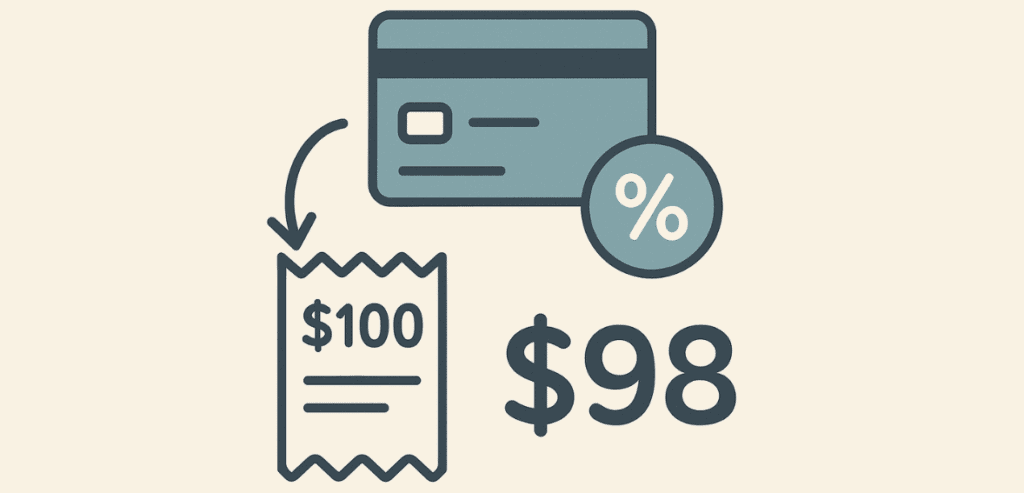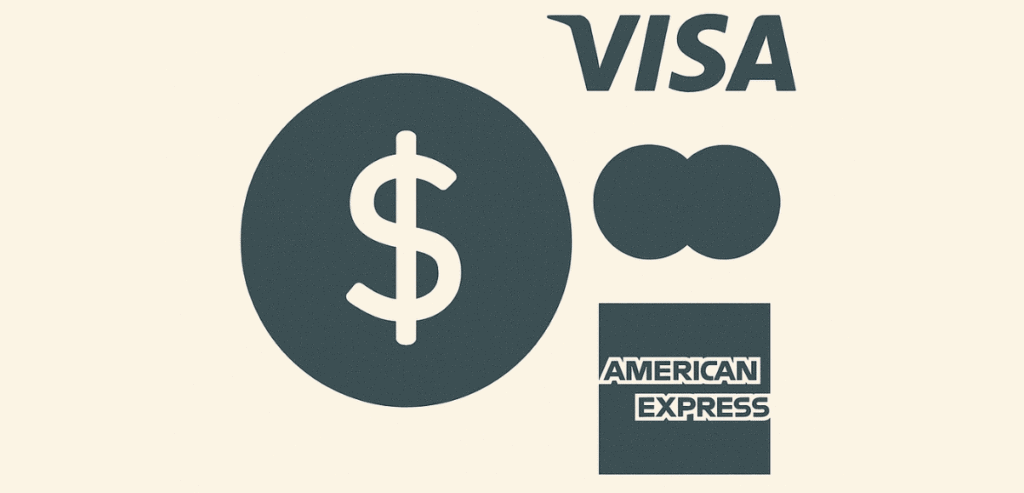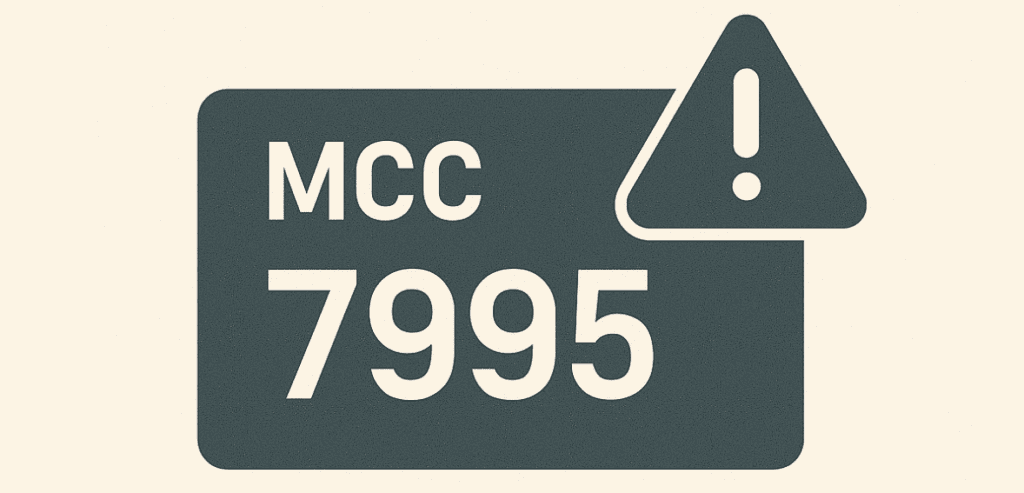
By merchantservices April 8, 2025
For any small business owner who takes credit or debit card payments, the phrase “Merchant Discount Rate” (MDR) is probably a familiar, but infuriating, part of their monthly invoice. This rate, in effect the fee for processing electronic transactions, can be a sneaky tax, perpetually changing and veiled in mystery. However, knowing MDR is essential to controlling costs, optimizing profitability, and making informed decisions about payment processing strategy.
This definitive guide will attempt to demystify the Merchant Discount Rate, empowering small business owners with the information they need to understand this important aspect of their business.
What is the Merchant Discount Rate?

The Merchant Discount Rate is the rate of each credit or debit card transaction a merchant pays to the parties processing the transaction. It’s similar to the toll charge for using the card payment network. It’s not a blanket fee but an aggregate rate based on hundreds of variables. It’s taken out of the overall transaction amount before the merchant gets the balance. So, if a customer spends $100 in your company and your MDR is 2%, you get $98.
Although the general definition is straightforward, the devil is in the details. One needs to understand what the MDR consists of in order to manage the cost accordingly.
Breaking Down the Components of the MDR
The Merchant Discount Rate is not one entity but rather a multi-layered structure that contains many discrete fees, each of which drains to some different actors in the payments processing ecosystem. The major parts are:
Interchange fees
This is the biggest and usually most volatile part of the MDR. Interchange fees are determined by the card networks (Visa, Mastercard, Discover, and American Express) and transferred to the card-issuing bank (the bank that issued the customer’s credit or debit card). These are non-negotiable fees and depend on a multifaceted matrix of considerations, such as the type of card being used (e.g., rewards card, business card, basic debit card), the acceptance method (e.g., online, face-to-face, keyed entry), and the merchant category code (MCC) for your business.
Rewards cards and premium cards generally command higher interchange fees, as do transactions that are viewed as higher risk. The card networks release extensive interchange fee schedules that are publicly available, but it is not easy to navigate these documents.
Assessments or Network Fees

These fees are also levied by the card networks (Visa, Mastercard, Discover, and American Express), but in contrast to interchange fees, they are paid directly to the network itself to defray the expense of maintaining and operating the payment processing infrastructure. These charges are typically a very small fraction of the transaction size but accumulate over time. They tend to be less volatile than interchange fees but may also move depending on network updates and particular card types.
Processor Markup
This is the charge your payment processor (for example, Square, Stripe, PayPal, or a standard merchant services company) charges for offering the payment processing services. This is how the processor earns its profit. The processor markup can be in the form of a fixed percentage, a fixed amount per transaction, or a blend of both.
This is usually the only cost a merchant can negotiate directly, so it is essential to know the processor’s pricing model and shop around for the best offer from various providers. The markup pays for the processor’s expenses for offering services like access to the payment gateway, fraud protection, reporting, and customer support.
Factors Influencing Your MDR

1. Card Type
Interchange fees vary for different types of cards. Premium cards, where rewards programs are provided like cash back or travel points, usually have higher interchange fees compared to regular cards. Business cards tend to have higher rates, owing to their perceived greater risk.
Debit cards, particularly online-debited cards, might have varying rates than credit cards. Knowing the kinds of cards your customers usually use will enable you to forecast your MDR.
2. Method of Acceptance
Your MDR is greatly affected by the way you take payments. Card-present transactions (where the card is swiped, dipped or tapped physically at a point-of-sale terminal) usually have lower charges than card-not-present transactions (where the card information is keyed manually online or via the telephone). This is because card-present transactions are less risky.
After all, the physical card is being verified. Card-not-present transactions are more vulnerable to fraud and thus have higher interchange fees to cover the higher risk. Employing EMV chip readers and contactless payment solutions can also assist in lowering your MDR by minimizing fraud risk.
3. Marchant Catarogary Code

Your Merchant Category Code, which your business received when you applied with your payment processor, classifies the type of merchandise or services your business sells. The card networks utilize this code to evaluate risk and set the correct interchange fees. Some industries, like those deemed high-risk (e.g., online gaming, adult entertainment), usually have greater MDRs because of the higher likelihood of fraud and chargebacks.
4. Transaction Volume
Though not always true, companies with higher volumes of transactions can sometimes negotiate lower MDRs from their payment processors. This is because processors stand to gain from the additional revenue brought in by handling a greater number of transactions. If your company sees dramatic growth, it’s worth checking back with your processor to determine if you can qualify for a reduced rate.
5. Business Credit Score
A lower business credit score may lead to increased MDR. This is viewed by payment processors as a reflection of the business’s strength or weakness in terms of its money, as well as its riskiness, and this will accordingly increase MDR.
6. Chargeback Ratio
Chargebacks, where a customer contests a transaction with his bank, can hurt your MDR. An excessive chargeback ratio indicates to the payment processor that your business is doing something risky or delivering substandard goods or services. Processors might raise your MDR or close your account if your chargeback ratio crosses a threshold.
7. Pricing Method
Different payment processors have different pricing models, each of which has its strengths and weaknesses. Knowledge of these models is important in selecting the best option suitable for your business needs. Some of the most common pricing models are:
- Interchange-Plus Pricing: This model is likely to be the most transparent one because it breaks out interchange fees and assessments distinctly from the processor’s markup. The processor is collecting a fixed rate and a flat transaction fee, on top of the interchange fees and assessments incurred. What this enables you to do is know very specifically how much you’re being charged for every piece of the MDR.
- Tiered Pricing: This model categorizes transactions into various tiers (e.g., qualified, mid-qualified, and non-qualified) depending on characteristics like card type and acceptance method. Each tier has a variable MDR. Although this model might appear straightforward at first glance, it could be more opaque, as it is sometimes challenging to ascertain which transactions belong in which tier and why. It is usually less favorable for merchants.
- Flat-Rate Pricing: This model imposes a single, fixed fee for all transactions, irrespective of card type or form of acceptance. This model is usually favored by small businesses because it is easy to understand and is predictable. Yet, it is not always the cheapest choice for businesses with a huge volume of low-value transactions or that only accept standard card types.
Strategies for Managing and Reading Your MDR

Although you cannot directly regulate interchange fees or assessments, there are some strategies you can use to control and even lower your Merchant Discount Rate:
- Negotiate with Your Processor: The processor markup is the most negotiable part of the MDR. Don’t hesitate to compare shops and negotiate offers from multiple processors. Emphasize your volume of transactions, business history, and any efforts you’ve made to decrease chargebacks or fraud. Be willing to walk away if you’re not happy with the offer.
- Optimize Your Payment Acceptance Practices: Get your customers to use EMV chip cards or contactless payment wherever possible. These are more secure and can assist in reducing your MDR. Make sure that your point-of-sale system is current and adheres to the most recent security standards. Wherever possible, avoid manually entering card details as this raises the risk of fraud and higher MDRs.
- Reduce Chargebacks: Put measures in place to reduce chargebacks, including good product descriptions, great customer service, and timely resolution of customer complaints. Implement address verification systems (AVS) and card verification value (CVV) checks for credit card transactions to ensure verification of the cardholder.
- Surcharge: In certain countries, surcharging customers is permitted for credit card use. With this, you are in a position to pass some of the MDR on to the customer. While doing so, you must ensure that all the laws and regulations in place about surcharging are adhered to, including revealing the surcharge to the customer before finalizing the transaction. Do not overlook the effects on customer satisfaction.
- Consider Cash Discount: Alternatively, to surcharging, you may provide an incentive for customers to pay with cash through the offer of a discount. This encourages customers to pay with cash without the complication and potential negative connotation of surcharging.
- Regularly Review Your Statement: Thoroughly examine your monthly processing statements to see if there are any errors or unusual fees. If something does not appear right, notify your processor at once to have it researched.
- Understand PCI Compliance: Make sure your business meets the Payment Card Industry Data Security Standard (PCI DSS) requirements. Being PCI compliant safeguards your cardholder’s information and decreases the chance of data breaches, which can result in higher MDRs and other fines.
- Consider Different Payment Options: Look into other forms of payment, like ACH transfers or mobile payment systems, that can offer lower processing fees than credit card payments.
- Audit Your MCC Code: Ensure your MCC code accurately describes your business. Misclassified or out-of-date codes can result in higher MDR.
Staying Informed and Seeking Expert Advice
The payment processing environment is always changing, with new technologies, regulations, and pricing models constantly being introduced. Keeping up to date with these changes is essential to effectively managing your MDR. Subscribe to industry magazines, attend webinars, and connect with other business owners to remain current on the latest trends.
Perhaps you should speak with a payment processing consultant or advisor. These experts will have expert advice to offer on choosing a good payment processor, negotiating optimal rates, and maximizing your payment acceptance procedures. They will also assist you in understanding the tricky interchange fee and regulatory environment.
Conclusion
Merchant Discount Rate is the cost of operating in today’s economy. As seemingly complicated and confusing as it may be, knowledge of its elements, which drive it, and how to manage it is vital for the small business operator who wishes to contain costs and optimize profitability. By being proactive in payment processing, you can be sure that you’re receiving the best available rates and safeguarding your bottom line.
Although there is no silver bullet to make these fees disappear, an educated strategy and smart choices can ensure that you minimize their effect on your business’s bottom line. Don’t forget to carefully examine your statements, proactively negotiate with your processor, and continually refine your payment acceptance methods. With the knowledge and techniques contained in this manual, you can proceed with confidence in the realm of Merchant Discount Rates and become the master of your payment processing expenses.